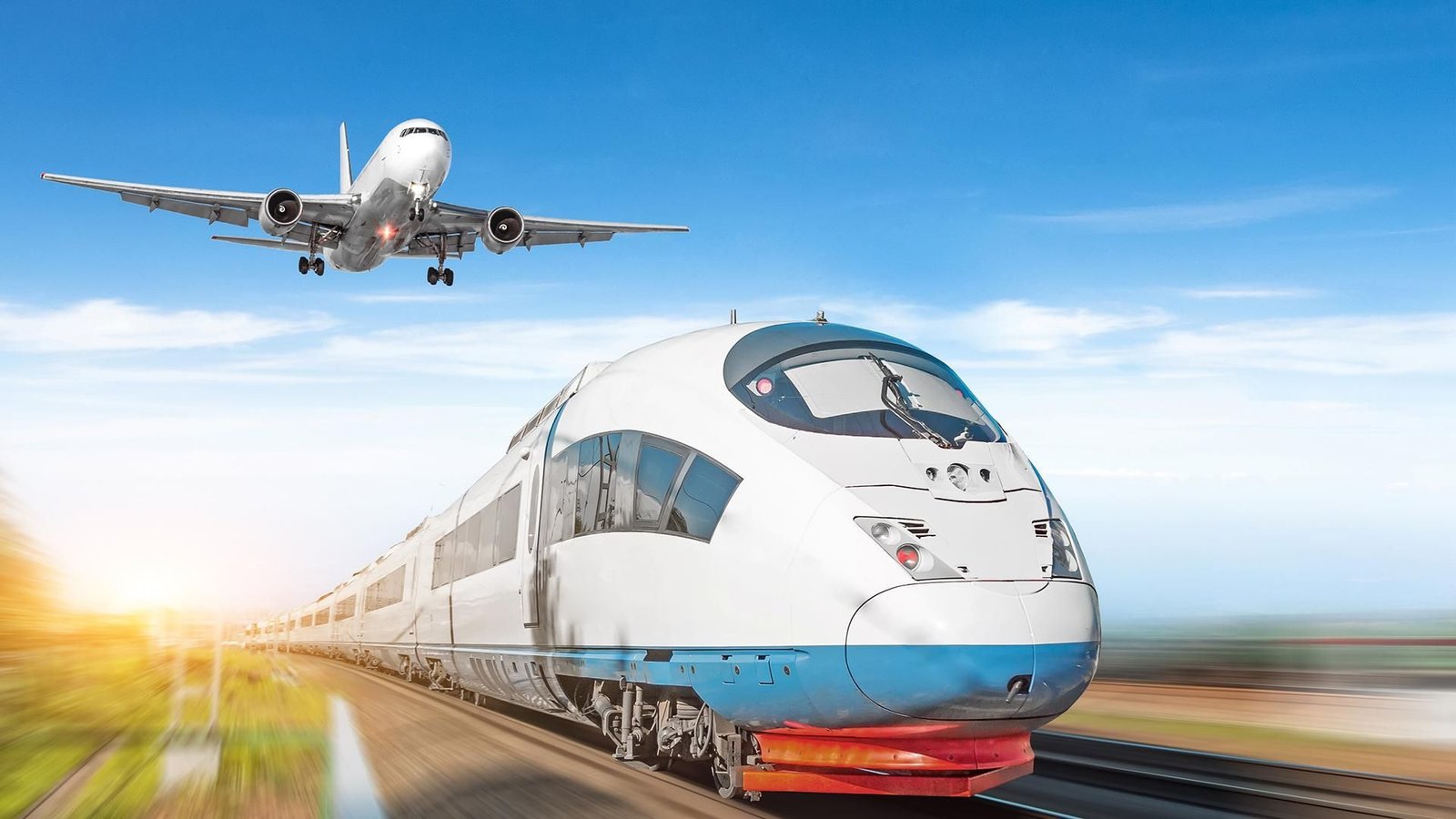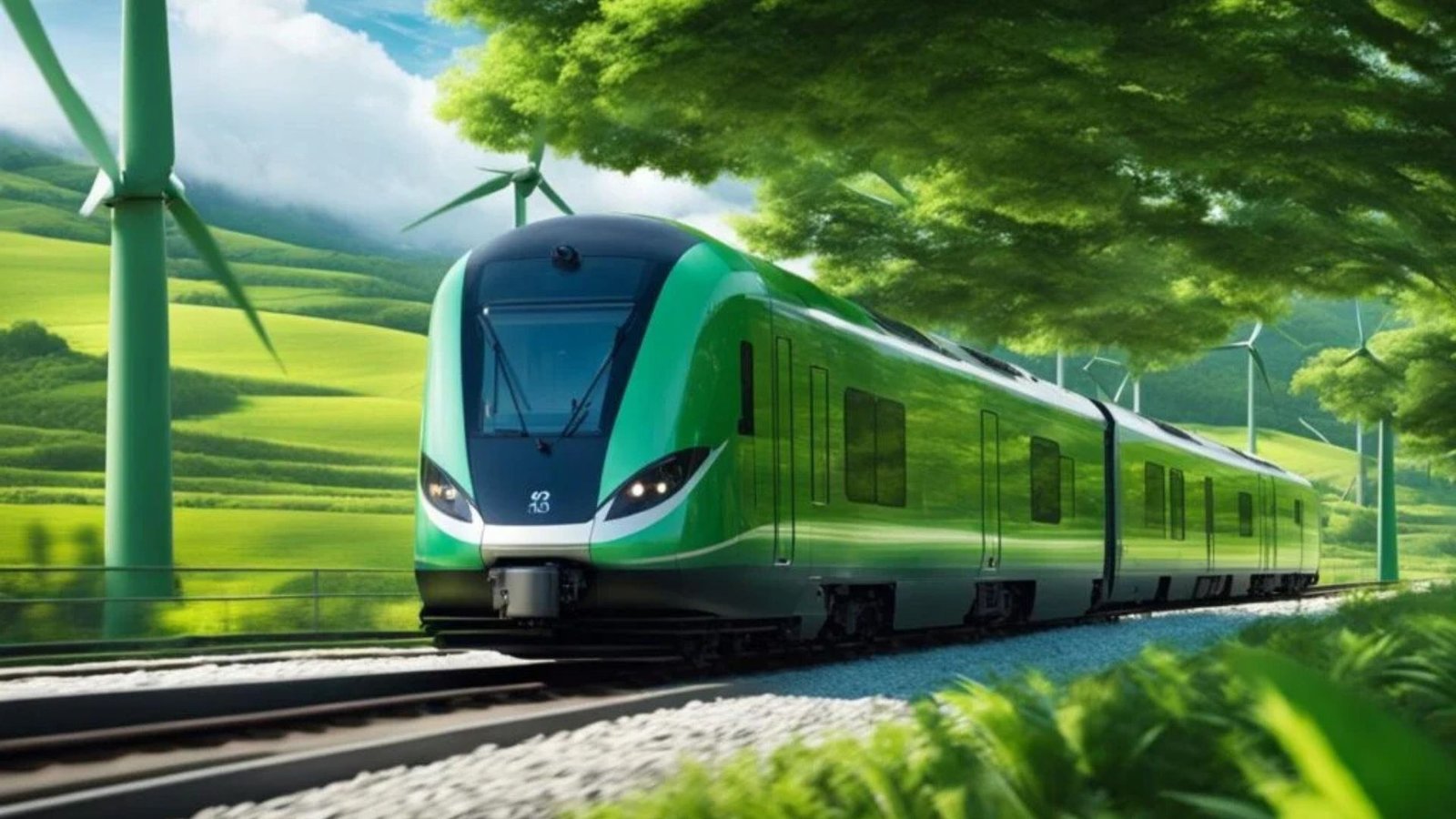In today’s world, sustainability is more important than ever. As we face the growing challenges of climate change, many people are turning to more eco-friendly modes of transport. When it comes to long-distance travel, trains are proving to be far more sustainable than planes. While both forms of transport are essential for modern life, trains offer significant environmental benefits that airplanes simply cannot match. In this article, we’ll explore why train travel is a greener choice and how it helps reduce carbon footprints and supports a more sustainable future.

1. Lower Carbon Emissions
One of the main reasons trains are more sustainable than planes is their lower carbon emissions. Trains, especially electric ones, produce significantly fewer greenhouse gases than airplanes. According to the European Environment Agency, train travel emits up to 80% less CO2 per passenger than flying. This is because trains run on electricity, and many rail networks use renewable energy sources such as wind, solar, and hydroelectric power to power their trains.
In comparison, airplanes rely on fossil fuels, which release large amounts of carbon dioxide (CO2) into the atmosphere. Even though airplanes have become more fuel-efficient over the years, they still have a much higher environmental impact than trains. Train travel is an effective way to reduce the carbon footprint associated with long-distance travel.
2. Energy Efficiency
Another reason trains are more sustainable than planes is their superior energy efficiency. Trains are much more energy-efficient per passenger kilometer than airplanes. A train can carry hundreds of passengers at once, using far less energy per person compared to the same number of people flying in a plane. This is partly because trains have less air resistance and operate on well-maintained tracks, which reduces energy consumption.
In contrast, airplanes are designed to fight against air resistance at high altitudes, which requires a lot more energy. Aircraft also use more fuel for takeoff and landing, which makes flying less efficient for short and medium distances. This makes rail travel an energy-efficient alternative to flying, especially when you’re traveling within countries or across nearby cities.
3. Less Noise and Air Pollution
Unlike airplanes, which produce significant amounts of noise pollution and air pollutants, trains are much quieter and cleaner. Airplanes release nitrogen oxides (NOx), carbon monoxide, and other harmful gases, which contribute to smog and air quality issues, especially around airports. These pollutants can hurt human health, contributing to respiratory problems and heart disease.
On the other hand, modern electric trains emit no exhaust fumes and produce very little noise pollution, particularly on well-maintained rail networks. Rail travel is generally much less intrusive for local communities, especially in rural or residential areas. This makes trains not only more sustainable but also healthier for both passengers and communities.
4. Less Land Use Impact
The environmental impact of transportation is not just about emissions and energy use; it also includes the land used for infrastructure. Airports require vast amounts of land for runways, terminals, and parking, which can lead to deforestation, habitat destruction, and urban sprawl. Building and expanding airports often requires significant environmental disruption.
In contrast, rail networks typically have smaller environmental footprints in terms of land use. Train stations are often located in urban areas, making it easier for people to access them without the need for expansive parking lots or vast infrastructure projects. While rail lines do require land for tracks, they tend to have less of an environmental impact in terms of land consumption compared to airports.
5. Longer Lifespan and Durability
Trains are built to last, and their durability also makes them more sustainable over the long term. Railcars and train stations are designed for decades of use, and modern trains often last much longer than airplanes. The maintenance and repair of trains is also less energy-intensive than that of planes, especially when they are powered by renewable sources.
In contrast, airplanes have a limited lifespan due to the wear and tear caused by high-speed travel, frequent takeoffs, and landings. As a result, airplanes require more frequent maintenance, and older models are often replaced with newer, more fuel-efficient versions. However, even with new technology, planes remain less durable and sustainable over their lifespans than trains.
6. Reduced Congestion and Infrastructure Strain
As the world’s population continues to grow, airports are becoming increasingly congested, with delays and long security lines becoming common. In contrast, trains provide a more efficient and stress-free travel experience, even on busy routes. With fewer delays and less time spent on security checks, passengers can enjoy a more sustainable and pleasant journey.
Rail systems also put less pressure on road infrastructure compared to air travel. Traffic congestion from cars and trucks leads to increased carbon emissions and road damage. Train travel reduces the need for cars and trucks, contributing to less road pollution and congestion. Additionally, rail travel is less dependent on weather conditions, reducing delays and disruptions caused by things like storms or poor visibility, which are common challenges for air travel.
7. Encouraging Public Transportation and Sustainable Urban Mobility
Rail travel encourages public transportation and supports the shift toward sustainable urban mobility. As cities grow, the need for eco-friendly and efficient public transport becomes more critical. High-speed trains, in particular, are often connected to local train systems, making it easy for passengers to transition from long-distance travel to city-wide mobility without needing a car.
This kind of integrated public transport system reduces car dependence, helping to lower emissions in urban areas. By promoting train networks as part of a larger eco-friendly transport system, we can create more sustainable cities and reduce our overall environmental impact.
8. High-Speed Rail: The Future of Sustainable Travel
Looking ahead, high-speed rail systems offer an exciting future for sustainable transportation. These trains can travel at speeds of up to 300 km/h (186 mph), reducing travel times significantly while maintaining eco-friendly benefits. Countries like Japan, France, and China already have highly efficient high-speed rail networks, and other countries are rapidly following suit.
As more high-speed rail lines are built, train travel will become an even more sustainable alternative to air travel. High-speed trains use electricity and offer low emissions, making them one of the greenest options for long-distance travel.
Conclusion
When it comes to sustainability, trains are the clear winner over planes. They produce lower carbon emissions, are more energy-efficient, and have less environmental impact in terms of noise, land use, and air pollution. With modern technologies and growing investments in green energy, rail travel is poised to become even more sustainable in the future.
As we continue to prioritize environmental responsibility, train travel offers a way to reduce our impact on the planet while still enjoying fast, comfortable, and efficient transportation. Choosing trains over planes for long-distance travel is one of the most effective ways we can all contribute to a greener, more sustainable future.



